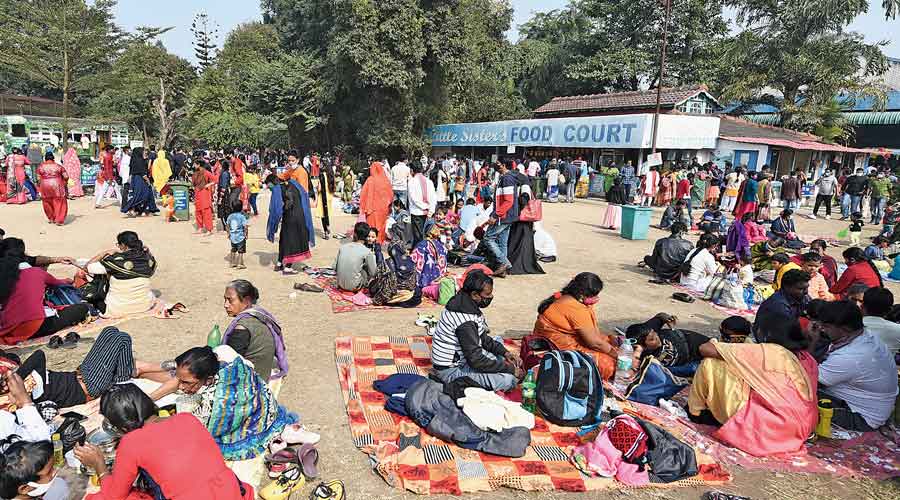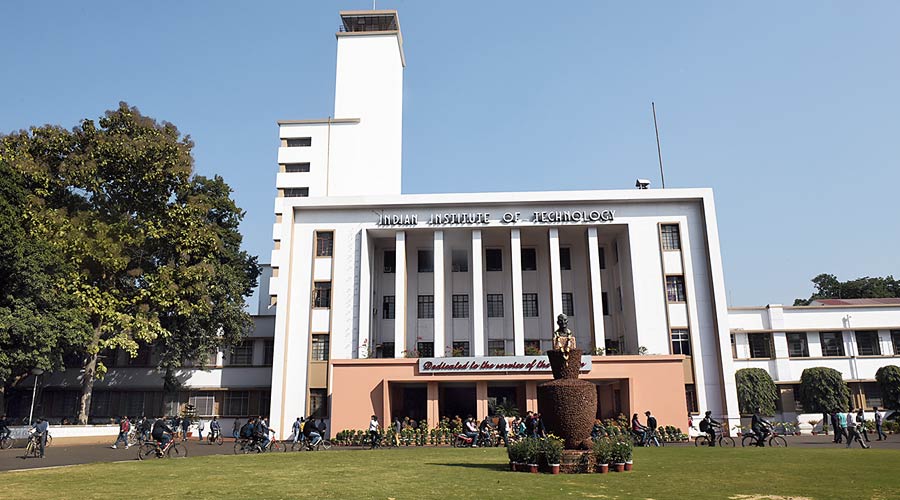Ballygunge, Alipore and Park Street are among the areas that have been hit the hardest during the current surge in Covid cases in the city, according to state health department data accessed by My Kolkata.
Overall south Kolkata has logged more Covid cases than the north with highrise apartment complexes often emerging as hotspots.
The city and its neighbouring areas have witnessed a sharp rise in Covid cases over the past week amid waves driven by the omicron variant of the Coronavirus in many parts of the world.
The number of fresh cases in Kolkata rose from 204 on December 27 to 3,194 on January 3. The positivity rate has soared from around 5 per cent to over 33 per cent, among the highest in the country.
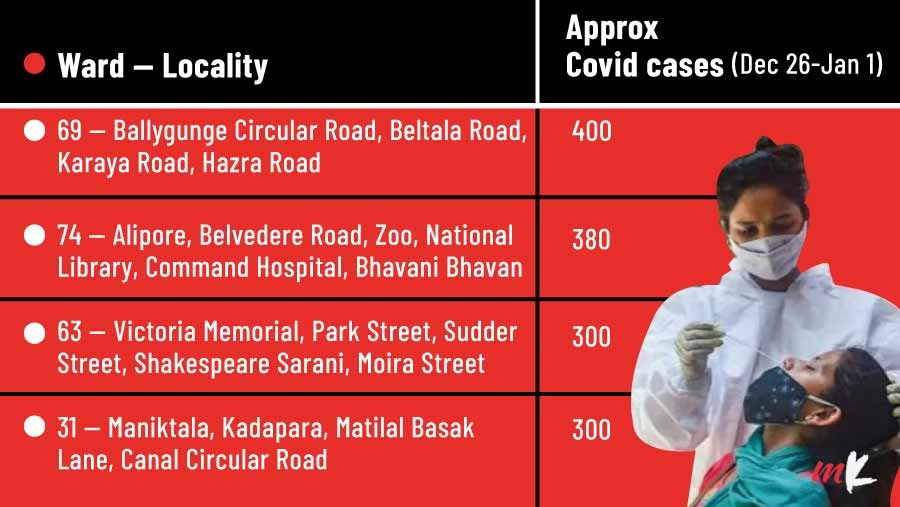
Graphic: Tiyasa Das
The most affected wards in the city include areas that attracted crowds during the Christmas and new year celebrations.
According to the data, ward 69 of the Kolkata Municipal Corporation, which includes Ballygunge Circular Road, Beltala and Hazra, logged the highest number of cases — 400 — in the week between December 26 and January 1. The number is almost eight times that of the preceding week.
Ward 74, which includes Alipore, Belvedere Road and the Command Hospital Area, was second with about 380 cases, followed by Ward 63, which includes Park Street, Shakespeare Sarani and the Victoria Memorial area, where Covid safety norms had been violated during the festive week.
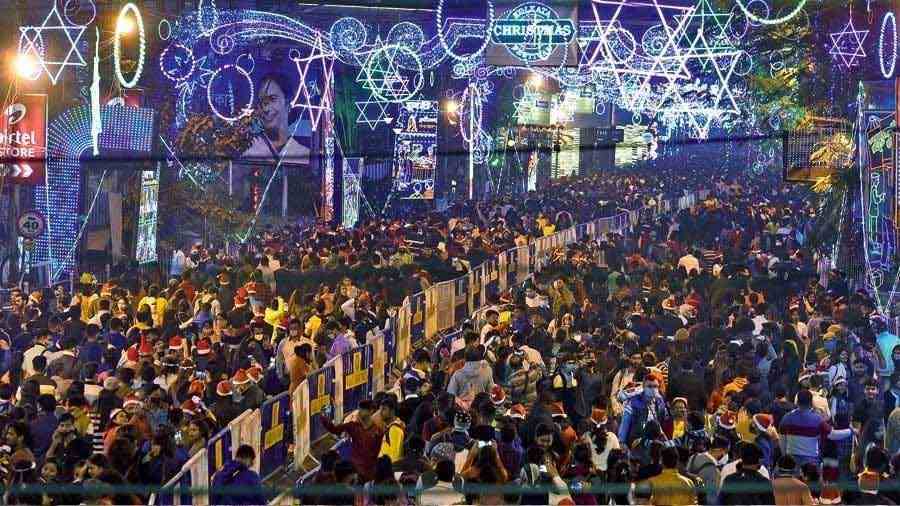
Ward 63, which includes Park Street (above), Shakespeare Sarani and the Victoria Memorial area, saw Covid safety norms being violated during the festive week TT archives
Ward 31, which includes Maniktala, Kadapara and Canal Circular Road, and where about a third of the population lives in the slums, was neck and neck with Ward 63 in terms of Covid spread.
All the wards affected the most in the latest Covid surge recorded a six- to eight-fold increase in cases compared with the week before.
“Borough 8 (Ballygunge Circular Road, Bhowanipore, Kalighat, Deshapriya Park and Gariahat) has recorded around 1,200 cases between December 26 and January 1; almost an eight-fold increase over the earlier week. Boroughs 7, 9 and 10, covering the southern, south-central and south-eastern part of the city, have also recorded 800 to 900 cases during the same period,” said a state government official, who did not want to be identified.
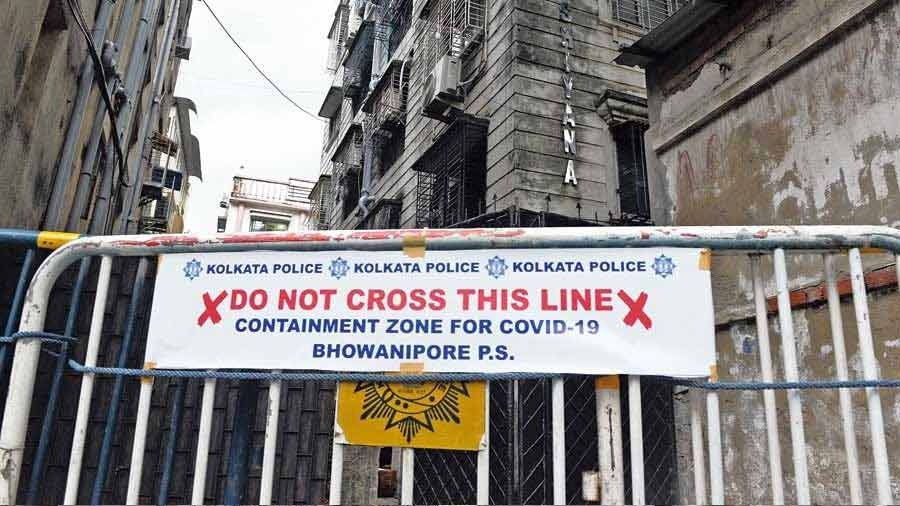
A containment zone in Bhowanipore TT archives
In north Kolkata, Borough 3 (Maniktala, Beleghata, Phoolbagan, Narkeldanga) showed the sharpest rise, driven by the surge in infection in Ward 31, said the official, adding that the upward trend is in evidence across the entire city.
“We have been observing that posh areas of the city, particularly highrises, are producing more cases than other areas. Boroughs 7, 8, 9 and 10, and other areas with similar demographic profile, are recording a comparatively higher number of cases,” said Tapan Mukherjee, a senior health advisor to the KMC.
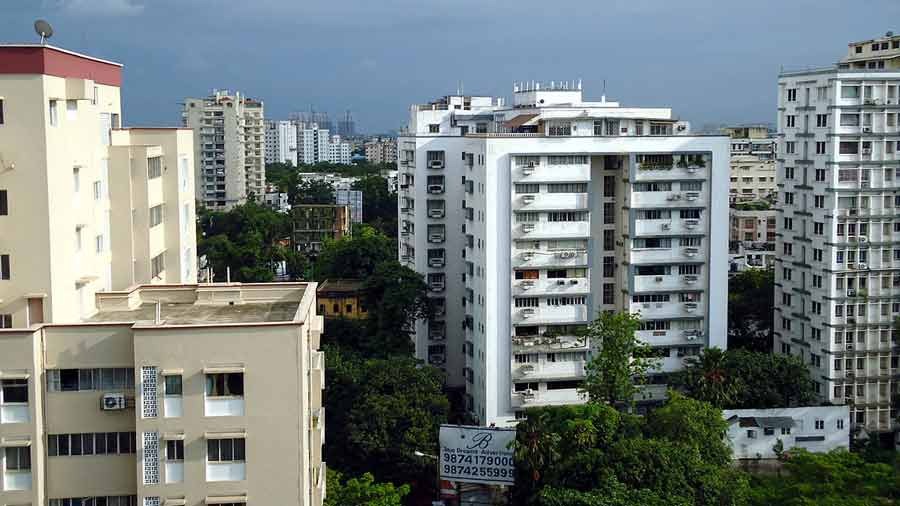
The highrises on Ballygunge Circular Road are the most affected in Borough 8 Kolkatan/Wikimedia Commons
“The highrises on Ballygunge Circular Road are the most affected with about a third of the cases in the ward being recorded there,” said Dilip Bose, the councilor of Ward 69.
“The number of cases was high in the highrise buildings on Park Street, Shakespeare Sarani and surrounding areas even during the two earlier Covid waves,” said a civic official.
A public health expert associated with the state government said fewer tests in the slum areas could be a reason behind the highrise numbers appearing comparatively higher.

Frontline workers at a slum in Kolkata TT archives
“Slum dwellers make up a large percentage of the Kolkata population. They are hardly undergoing Covid tests, possibly because of the expenditure and hassles involved, and hence a large number of cases are going unreported,” said the expert.


